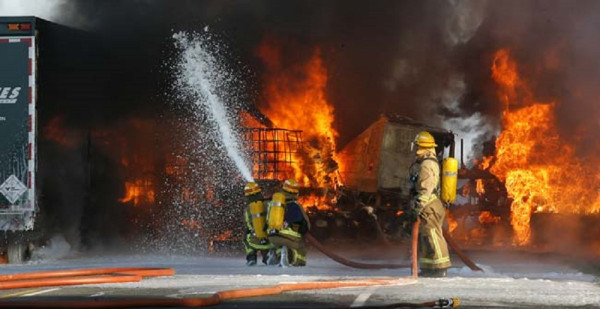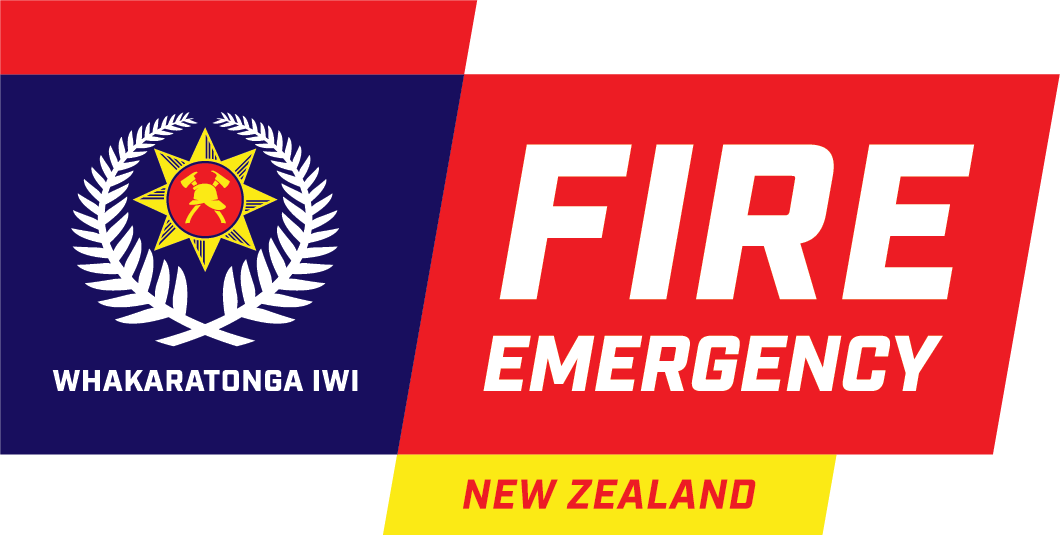Keeping safe when working around fire and explosive materials
Over the past two years, there have been 86 near miss events in Safe@Work that have recorded the presence of the critical risk ‘working in and around fire and explosive materials’. Most of these events are risk rated as low risk or medium risk, although there are near miss events recorded where the risk is rated as high or very high.
Identifying what we can learn from “near miss” events is important. It’s an opportunity to increase awareness of safety measures to protect our people from the potential harms that can occur from the presence of critical risks – like working in and around explosive materials.

Working in and around fire and explosive materials “near miss” example
- On arrival to a house fire, firefighters observed a well-established fire in the ceiling of a large residential structure.
- When talking to the owner of the property, the Officer in Charge (OIC) was informed that the fire had come down from the roof via a home ventilation system vent and had caught the lounge on fire.
- The OIC adopted offensive internal tactics and had the crew establish a low-pressure delivery.
- A 360-degree size up of the property commenced, but during this the OIC noticed a significant change in the colour and volume of smoke, which was very black and engulfed the entire roof area.
- The crew was ordered to withdraw on the Incident Ground Communication (IGC) radio and returned to the front door.
- The smoke level on entry had been about 1.8 metres from the floor, when the OIC returned to the area, the smoke was very thick and black and at floor level. Fire conditions had unexplainably changed and very rapidly.
- The OIC verbally assisted the crew to the door as that was a more direct route than following the delivery, and their visibility was zero.
- Defensive external tactics were adopted until the fire and smoke was controlled enough so that the crew could return to an offensive interior attack.
- Later it was discovered the reason for the rapid-fire development was the use of polystyrene as an insulating material in the ceiling of the structure.
- The materials used in the residential structure were not those an officer would normally expect to find and made a significant difference to the fire behaviour and rapid escalation.
Lessons identified
- Situational awareness – This is a good news story about situational awareness. It is critical at an incident that everyone is aware of their surroundings and the potential hazards they may face, no matter how familiar or routine the task is.
- Initial 360 assessment – The OIC was able to assess the initial hazards and risks and tasked the crew appropriately, and then took direct action when fire conditions rapidly changed.
- Confidence in observations – If you see something – say something, trust your intuition and experience, and investigate any reported observations from others.
- Incident Ground Communication (IGC) – Consider using a communications plan at every incident you attend to ensure when you are at a complex working job, IGC radio use is embedded in the crews’ automatic response.
- Home ventilation vents – Especially in older homes where home ventilation has been retro fitted, there is an often-unrecognised hazard when an uncontrolled fire is burning in the ceiling void. As there are plastic vents in multiple rooms, these can catch fire and drip burning plastic from the ceiling, creating multiple seats of fire throughout the structure. Internal firefighting crews must be aware of this and have situational awareness of uncontrolled fire spread, fire appearing behind them, or in rooms already cleared.
- Polystyrene insulation – While not common as an insulation product in ceiling spaces, it is common in underfloor insulation. Firefighters should be aware that different products present a range of hazards at an incident.
- MAYDAY procedure – On discussion with the OIC after this event they reflected that they should have called a MAYDAY instead of just yelling GET OUT. Although we teach our crews to declare a MAYDAY in situations where they need help, there is also an opportunity here for the OIC outside to use the MAYDAY procedure - due to the rapid change in conditions that threatened the safety of internal firefighting crews.
- Training – Factor the learning opportunities from this incident into operational training and discussions to raise crews’ awareness of these type of hazards.
Important to remember
- Apply at all times the Safe Person Concept and Dynamic Risk Assessments(external link). Review these regularly and incorporate them into all your drill and exercise scenarios.
- Situations can change very rapidly; procedures need to be in place to manage the dynamic risks.
- Always follow your training and standard operating procedures, no matter how routine or familiar a response appears to be.
- With warmer weather at this time of year the risk of heat stress occurring is higher. Please ensure you manage fatigue, keep hydrated and lookout for your peers.
Log any Safety, Health or Wellbeing events via Safe@Work.
If you need help on how to log an event, refer to the report workplace safety, health and wellbeing event page, or contact your Regional Safety, Health and Wellbeing Advisor.
Resources
- Report a workplace safety, health or wellbeing event
- Safety and wellbeing manual
- Operational Reviews
- Operational lessons learned
- Feederlines – Operational Withdrawal(external link)
- Feederlines - Situational awareness(external link)
Other critical risks we have covered:
